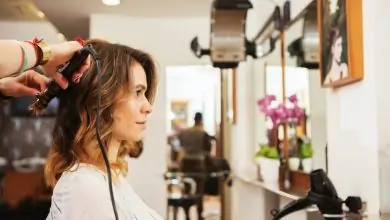Help Your Hair Repair After Harsh Winter Conditions

The summer is coming to an end (to our dismay), and it’s that time of the year when you must begin preparing for winter’s onset. As temperatures fall from their peak highs and the days grow shorter, it is also vital for you to make the necessary adjustments to maintain optimum health. Part of these adjustments calls for you to switch up your routines to better match the prevailing seasonal conditions.
One of the first things that may spring to mind when thinking of preparations for winter is your skin, with good reason. Your skin is your body’s largest organ and often reflects the state of your inner body. But in caring for your skin, you must remember another highly visible body part: your hair. Believe it or not, the seasons also affect your hair. So, as winter comes around, it is best to make appropriate preparations to ensure your hair is well cared for and protected against such harsh conditions during and after the season.
Harsh winter conditions such as cold temperatures, low humidity, and strong winds can harm the hair. Cold air and low humidity can cause the hair to become dry, brittle and prone to breakage. Additionally, strong winds can tangle and knot the hair, leading to further damage. Hence, to mitigate the effects of harsh winter conditions on the hair, it is recommended to keep a close eye on the hair and employ various preventative care measures to help you maintain its health.
Here is a quick breakdown of the best hair-care measures to implement during and after the winter:
During the Winter
Here are some ways to protect your hair from harsh winter conditions:
These tips can help protect your hair from the damaging effects of harsh winter conditions.Wear a hat: Covering your head with a hat can help protect your hair from the cold and wind.
1.Use the right hair care products: Shampoo acts as a base for how your hair behaves in various conditions and interacts with other products. So, it is best to opt for natural products, particularly during the winter. Additionally, apply a leave-in conditioner or oil to your hair before going outside to help protect it from the elements.
2.Avoid washing your hair too frequently: It can strip it of natural oils, making it more susceptible to damage from harsh winter conditions.
3.Go with the right styling options: Your hair is most vulnerable to moisture loss during the winter. Therefore, your primary goal is to retain as much moisture as possible. This need necessitates avoiding or limiting your use of heat styling tools and steering clear of products like alcohol-based holding sprays that are more likely to have a drying effect.
4.Use a humidifier: Keeping the air in your home moist can help prevent your hair from becoming dry and brittle.
5.Limit exposure to extreme weather: Try to limit your time outside in harsh winter conditions and avoid being outside for extended periods without protection.
6.Use a silk or satin pillowcase: Sleeping on a silk or satin pillowcase can reduce friction between your hair and the pillow, helping to prevent damage.
Helping Your Hair Repair After Exposure
Once winter has passed and it starts getting warmer again, it is best to look closely at your hair to determine how it has faired during the season. If you discover some damage or find that it is not at optimum health, don’t fret. Instead, consider the following measures to help repair your hair and restore it.
To repair hair with winter damage, try the following:
- Hydrate: One of the primary symptoms of winter damage is a noticeable lack of moisture. So, first, use a deep conditioning treatment or hair mask regularly to add moisture back into the hair. You can also use leave-in conditioners or oils to seal in hydration.
- Trim split ends: Regularly trimming split ends can prevent further damage from spreading up the hair shaft.
- Protect hair when outside: Wear a hat, scarf or hood to protect hair from the cold, wind, and snow. A better option would be to find a silk or satin-lined hat to help prevent further moisture loss to the hat’s material.
- Avoid tools for heat styling: Minimise the use of flat irons, hair dryers and curling wands, which can exacerbate dryness and further damage the hair.
- Eat a healthy diet: A balanced diet rich in vitamins and minerals can help improve your hair’s health. Couple this approach with managing your stress levels and plenty of sleep to boost your outcomes.
By following these tips, you can help repair and restore the health of your hair after exposure to harsh winter conditions. Moreover, with a little diligence and some consistency, you will establish a strong foundation that ensures adequate preparedness for the next winter season.




